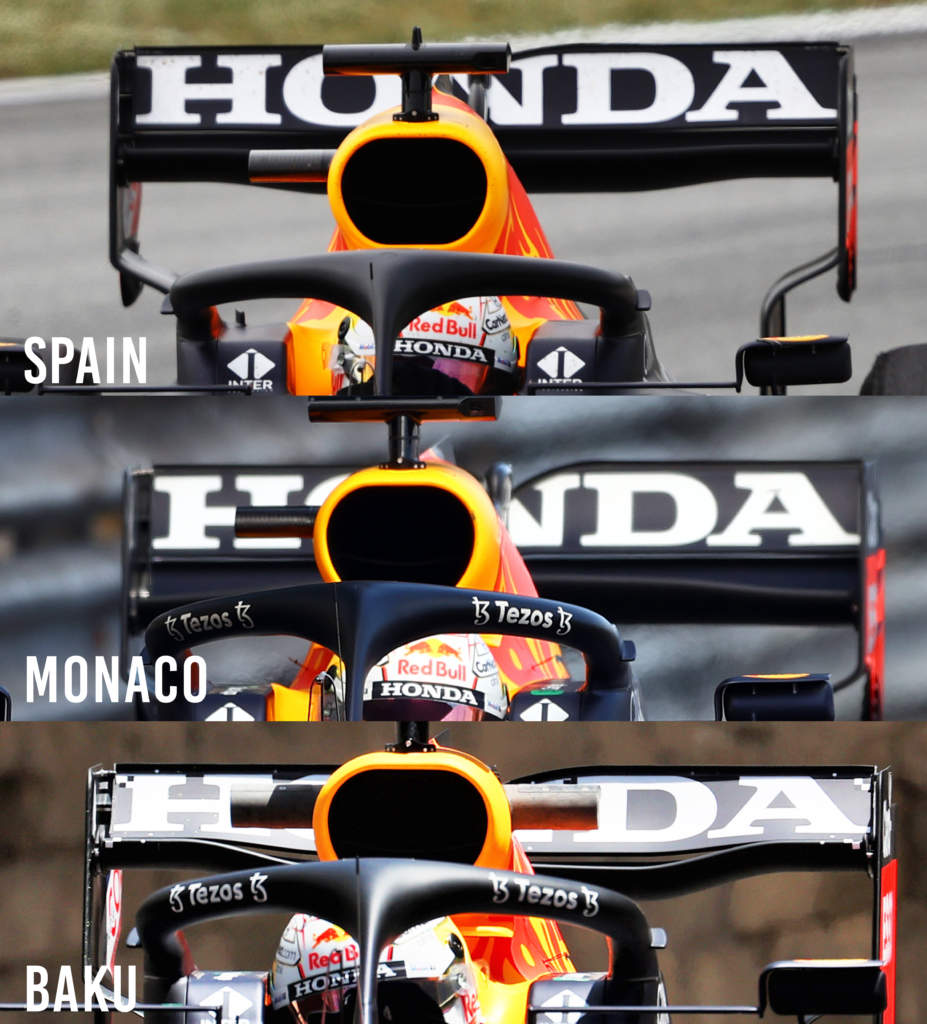Up Next

Baku is an interesting circuit for rear-wing specification given the unusual combination of long straights and slower corners. Like Monaco, it’s a street circuit but as a look at Red Bull’s rear wing specifications show you, the demands are different.
The airflow direction across the span of the rear wing varies dramatically. That’s why you see such a variation across the leading edge. For Monaco, you want to run everything you have plus a bit more if possible, so that means using all the area permitted in the regulations. This means that from the front view, it’s more or less a rectangular shape.
Looking at the Red Bull Monaco wing, it still had that raised leading edge on the centre line to pick up the flow coming over and around the engine cover.
Red Bull’s rear wing for Barcelona, which is a medium-to-high downforce wing, had the same raised centre section but with reduced section depth on the outer ends. Visually, this gives a fairly straight leading edge.

The Baku rear wing specification run on Friday is an exaggeration of the same philosophy, but with the complete wing reduced in size from the front view. I was never a fan of changing the section of the wing as quickly as this because it would generate crossflow, but with the centre section of the wing helping the performance of the diffuser, you want to keep them as close as possible otherwise they will stop ‘talking’ to each other.
The reason for reducing the workload of the outer ends is that this is the most inefficient section of the wing. If you look at any of the cars running in damp conditions, you can see the vortex that is generated from the upper, outer rear corner of the wing.
In this area, you have three quite different air pressures all meeting up – the top surface with high pressure, outer surface with free-stream (ish) airflow and lower surface with low pressure. When they all try to get together, it will generate a rotation. Looking from the front, the right-hand top corner will rotate clockwise, the left-hand top corner anti-clockwise.
On the other parts of the car, these vortices would be used to energise the airflow in certain areas, but this vortex being pulled along behind the rear wing does nothing but generate drag. The teams put lots of effort into the design of the top corner of the endplates and the detail on the outer surface, but still when a wing is generating downforce and it stops so abruptly, some airflow disturbance is inevitable.
Think of it like an aeroplane wing. They used to just taper down to a small wing section, but if you look out the window you will still see a vortex coming off the tip of the wing.
Now, more or less every plane has a turned up or turned down end. This allows them to dissipate the pressure differential without losing lift from the wing section, which in turn reduces the drag and improves the fuel efficiency so that for a given weight they can fly further.





